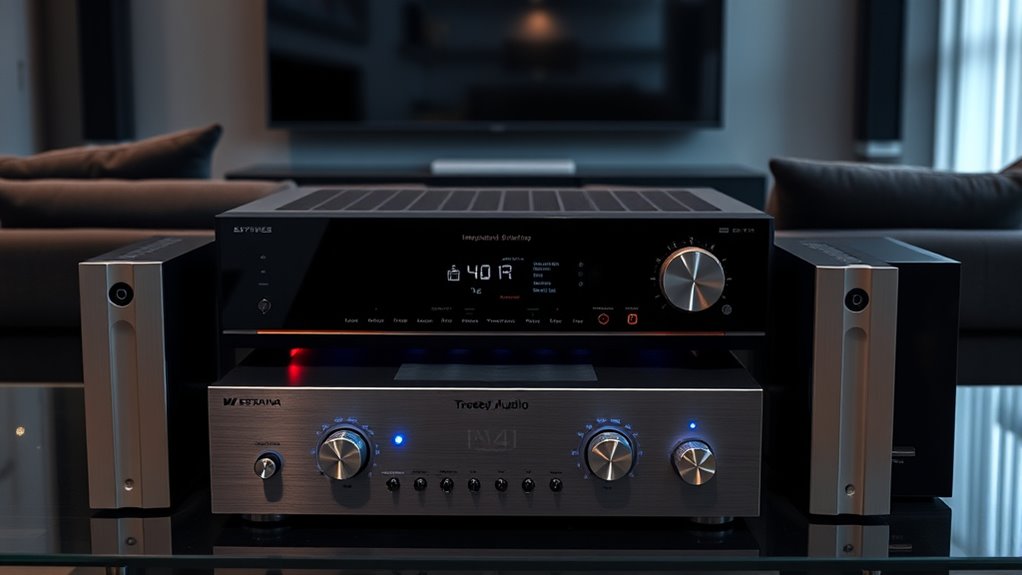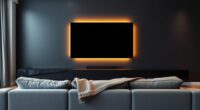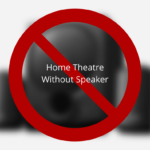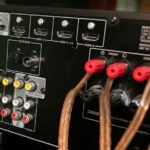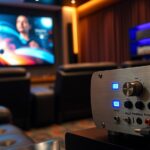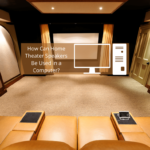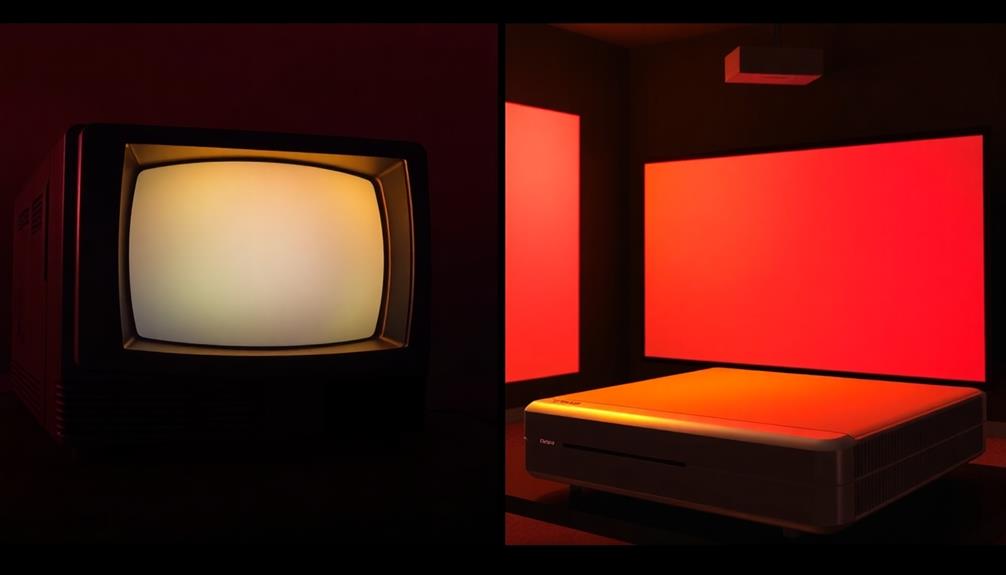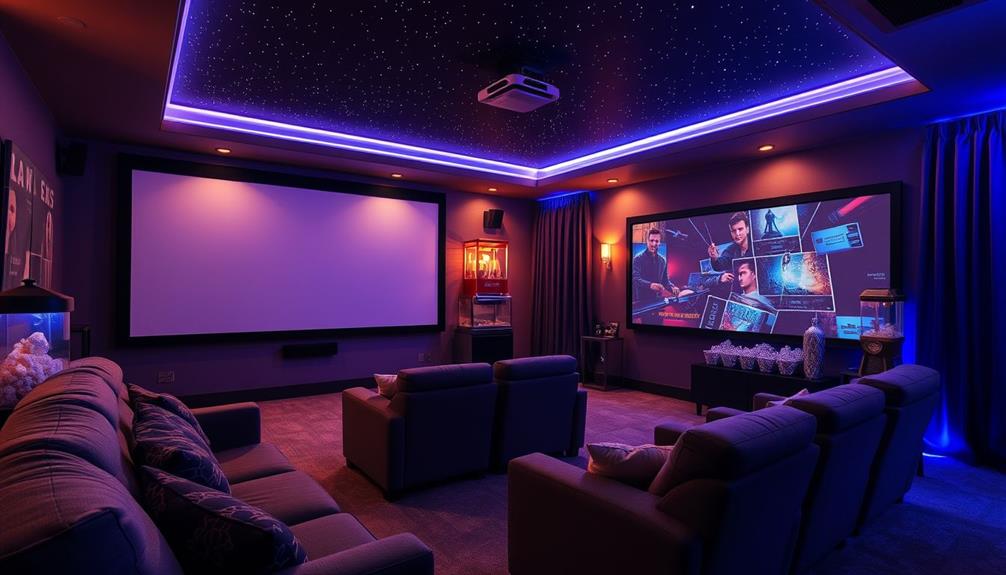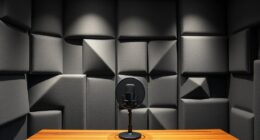Whether you need external amps depends on your audio goals. If you want a simple, space-saving setup and focus on home theater convenience, an all-in-one AV receiver is ideal. But if you crave maximum sound quality, customization, and have a larger room or high power needs, separate amplifiers could be a better fit. Understanding the differences can help you make a smarter choice—keep exploring to learn more about what suits your setup best.
Key Takeaways
- AV receivers combine multiple functions in one unit, ideal for simple, space-saving home theater setups.
- Separate amplifiers offer higher customization and superior sound quality, suitable for audiophiles.
- External amps are recommended for large rooms, high power needs, or advanced audio systems.
- Modern AV receivers may include built-in amplification, reducing the need for external amps.
- Choose based on your room size, sound quality goals, technical skill, and budget for optimal setup.
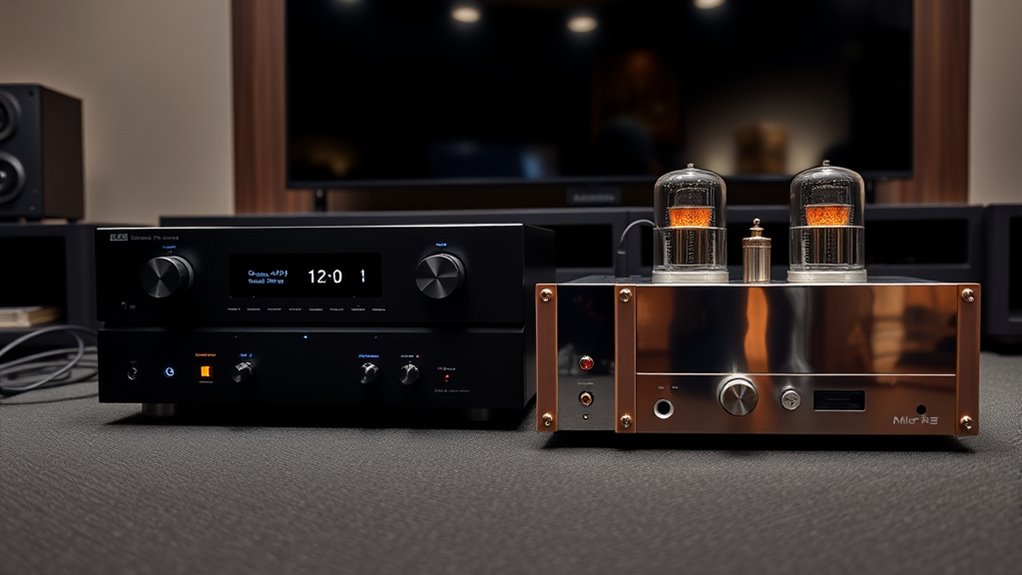
When choosing between AV receivers and separate amplifiers, understanding their differences is essential for optimizing your home audio setup. AV receivers are all-in-one units that combine a preamp, power amplifier, tuner, and various input/output options in a single box. They’re designed to simplify your setup, offering convenience and streamlined connectivity. If you’re aiming for an easy-to-install, space-saving solution that handles multiple sources like Blu-ray players, gaming consoles, and streaming devices, an AV receiver is often the best choice. They usually come with built-in decoders for Dolby Atmos, DTS:X, and other immersive formats, making them suitable for home theater enthusiasts seeking a comprehensive audio experience.
AV receivers combine preamps, power amps, tuners, and inputs for easy, space-saving home theater setup.
Separate amplifiers, on the other hand, consist of individual components: a dedicated preamp and power amplifier. This modular approach allows you to customize your system by selecting high-quality units tailored to your specific needs. If you’re an audiophile or someone who demands the highest sound fidelity, separating the amplification from the preamp can deliver cleaner, more detailed sound. Separate amps also tend to run cooler and be more expandable, giving you the flexibility to upgrade individual components over time without replacing the entire system. However, they require more space, additional wiring, and a higher level of technical knowledge to set up and calibrate properly. Proper system setup is essential to maximize performance and avoid potential issues.
Deciding whether you need external amps depends largely on your listening preferences, room size, and budget. If you have a large room or plan to drive multiple speakers with high power demands, adding external amplifiers can deliver more headroom and better dynamic range. This setup can improve clarity, especially at higher volumes, and help prevent distortion. Additionally, projector technology such as high refresh rates and HDR support can be complemented by a robust audio system, enhancing your overall home theater experience. Furthermore, choosing the right components can significantly impact your sound quality, especially when considering audiophile-grade equipment that emphasizes clarity and fidelity. This setup can also help in creating a more immersive environment for movie and music enthusiasts.
Moreover, some modern AV receivers are now incorporating power amplification features, blurring the lines between integrated and separate systems and offering a hybrid approach for versatility. Another factor to consider is future-proofing. If you anticipate expanding your audio system or upgrading components over time, separate amps provide flexibility. You can upgrade the power amplifier without touching the preamp or source components. Furthermore, this allows for more tailored sound tuning and better adaptation to evolving technology standards. But if simplicity and ease of use are your priorities, sticking with a high-quality AV receiver might be more practical. Ultimately, your choice hinges on your audio goals, room size, and how much you’re willing to invest in a flexible, scalable system.
Frequently Asked Questions
Can I Upgrade My AV Receiver With External Amplifiers Later?
You can definitely upgrade your AV receiver with external amplifiers later. Many modern receivers have pre-out connections that let you add external amps for more power and better sound quality. Just make certain your receiver has the appropriate pre-outs, and choose an amplifier compatible with your system’s needs. Upgrading this way lets you customize your setup and improve audio performance without replacing the entire receiver.
Do Separate Amplifiers Improve Sound Quality Over AV Receivers?
Separate amplifiers often provide better sound quality than AV receivers because they’re dedicated solely to amplification, reducing interference and offering more power. If you want cleaner, more detailed audio, upgrading to external amps can make a noticeable difference, especially with high-end speakers. However, for casual listening or smaller setups, a good AV receiver may suffice. Consider your audio goals and equipment to decide if separate amps are worth the upgrade.
Are External Amps Necessary for Multi-Room Audio Setups?
You might find external amps helpful for multi-room audio setups, especially if you’re aiming for high-quality sound in each room. External amps can deliver more power and clarity, ensuring each zone gets sufficient volume and fidelity. However, if your current AV receiver has enough channels and power, you may not need additional amps. Consider your system’s size, speaker demands, and desired sound quality to decide if external amplification is necessary.
How Do Power Outputs Compare Between AV Receivers and External Amps?
Did you know that external amps typically deliver 50% more power than AV receivers? When comparing power outputs, external amplifiers often provide higher wattage per channel, making them ideal for large rooms or high-volume listening. AV receivers usually have built-in amplification, but they may fall short for demanding setups. So, if you need more power and clarity, external amps are a smart choice to enhance your system’s performance.
Is There a Significant Cost Difference Between AV Receivers and External Amplifiers?
When comparing costs, you’ll find that AV receivers are generally more affordable than buying external amplifiers separately. AV receivers combine multiple features into one unit, which keeps the total price lower. External amps, on the other hand, tend to be pricier because you’re paying for additional power and quality. If you’re on a budget or want simplicity, an AV receiver is more cost-effective. But if you need high power, external amps might be worth the extra cost.
Conclusion
In the end, choosing between AV receivers and separate amplifiers is like deciding whether to ride the ship or sail your own course. Both have their merits, but it’s your journey that truly matters. Think of it as forging your own legend—whether you rely on a trusty vessel or set out with a custom-made fleet, your audio adventure awaits. So, pick what suits your style, and let your home theater become your personal Odyssey.
